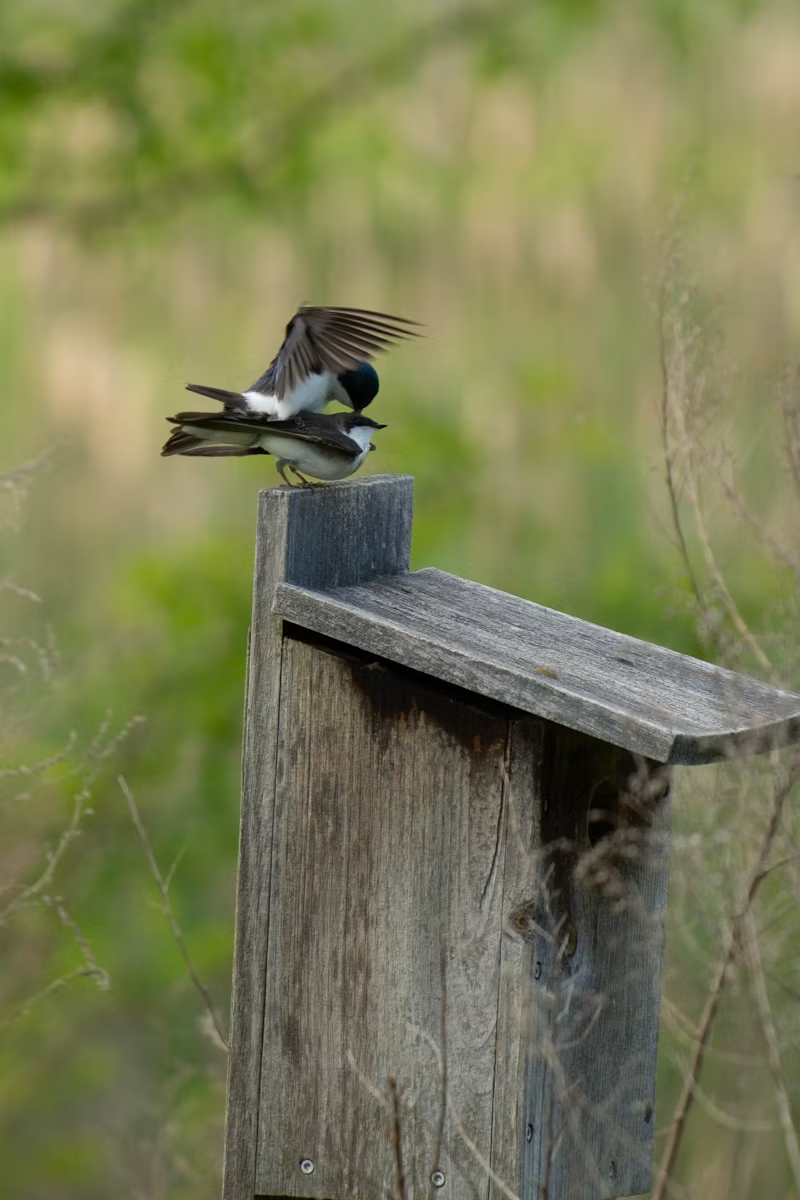
Tree Swallows are monogamous—mostly. But don’t be fooled by their commitment; these birds engage in a steamy side hustle of extra-pair copulations, ensuring their genes scatter far and wide like dandelion fluff in the wind.
Mating Season: Late March through early July in North America. A time when every snag, fencepost, and birdhouse becomes an avian aphrodisiac.
Courtship: The male seduces with real estate. He finds a cozy cavity—often a birdhouse like the one pictured—and flutters and chirps seductively to draw in a female. She evaluates not only the nest site but his vigor, song, and let’s be honest—his stamina.
🥚 The Egg-squisite Outcome
Once coupled, the female lays 4 to 7 glossy white eggs, one per day, which she incubates solo for 13 to 16 days. During this period, our gallant male may still cavort with other nearby females—because even the most dashing of daddies has his… proclivities.
Chicks hatch naked and blind, completely dependent on their parents. They fledge after about 18–22 days, launching into a world where flying becomes both survival and courtship foreplay.
💋 Arousal in the Air
What makes the Tree Swallow a true Casanova of the canopy is his aerial agility. Few birds rival his acrobatic finesse. He can out-dodge hawks, skim water like a skipping stone, and still find time for a midair serenade. Even during the act of mating, he flutters with such flair that it seems the wind itself blushes.
Fun Fact: Though they’re cavity nesters, Tree Swallows line their nests with soft feathers, often stolen from unsuspecting neighbors—because nothing says “be mine” like a pilfered plume from a Canada Goose.
Final Whisper…
“In the fleeting seconds of passion, atop this quiet stage of weathered wood, a future generation is conceived—nestled in feathers, sealed with song, and kissed by the sky itself. For the Tree Swallow, love may be brief… but oh, it is airborne and electric.”